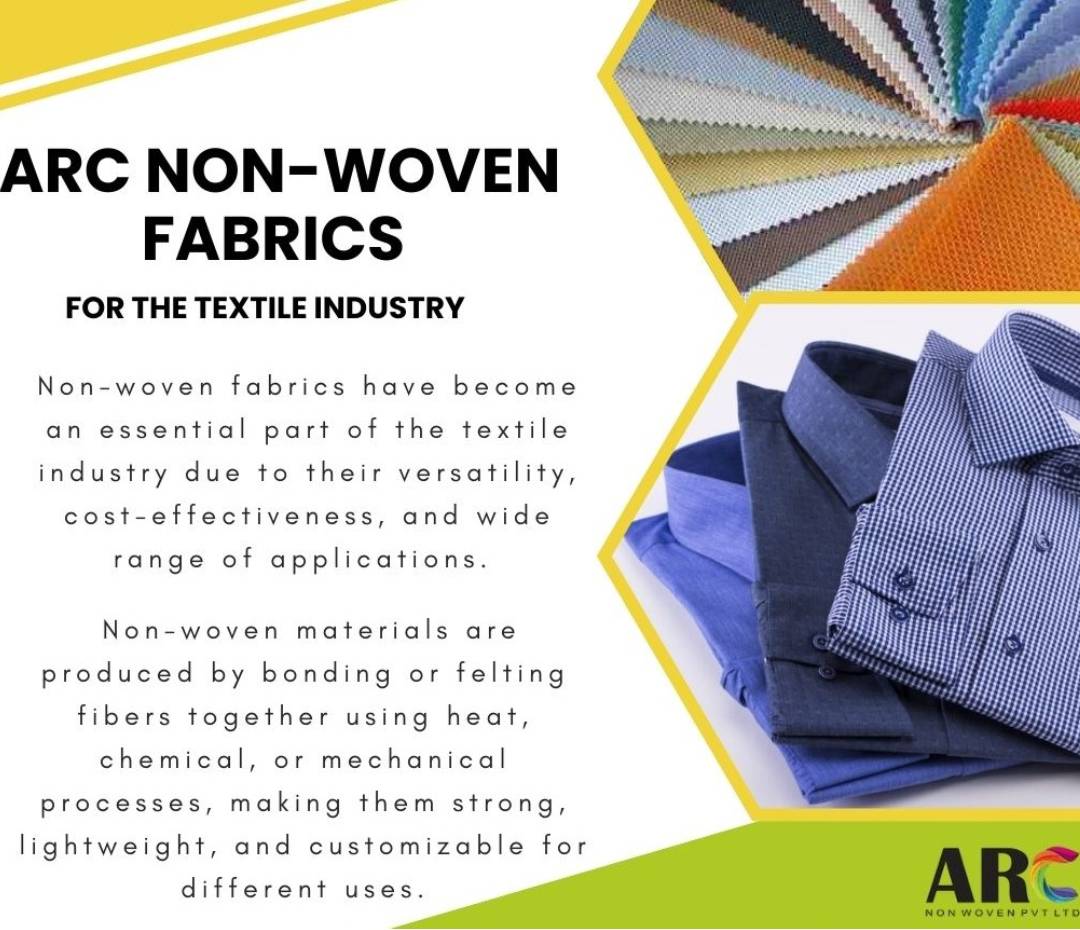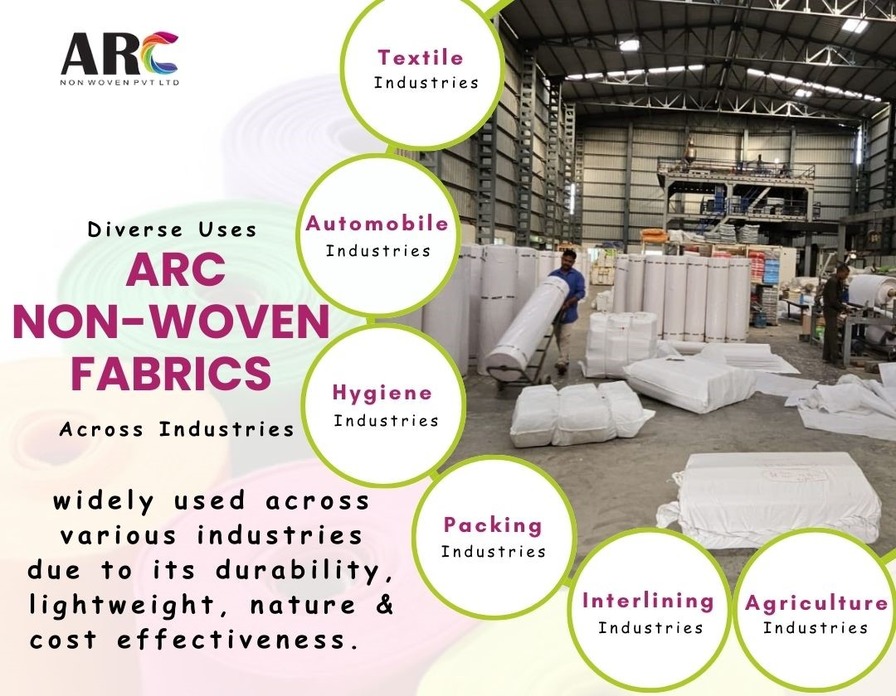Innovations with ARC Nonwoven Fabric in Multiple Sectors
Explore the various implementations of ARC Nonwoven Fabric across different sectors. Learn how these innovations are revolutionizing industry norms.
Read More
Non-woven fabric are changing the game in today’s textile world. They’re versatile, affordable, and used in many products. A new type gaining attention is arc non-woven fabric. These fabric have unique features that make them ideal for many industries. Knowing about them can help manufacturers, designers, and industry players make smarter choices.
Arc non-woven fabric are made from fibers that are bonded together without weaving or knitting. The term “arc” refers to the specific structure or process that creates these fabric, giving them unique strength and flexibility. They are produced by bonding fibers using methods like heat, chemical agents, or mechanical processes.
These fabric are strong yet lightweight. They hold up well under stress and last longer than traditional textiles. Many are eco-friendly, made with recyclable or biodegradable materials. Plus, they often resist moisture and dirt, making them practical for multiple uses.
Unlike woven fabric, which interlace threads, arc non-woven are held together by bonding. This results in a fabric that’s usually more flexible and easier to produce in large quantities.
Compared to spun bond or melt blown non-woven, arc non-woven often have higher strength and better environmental properties. Spun bond fabric use spun fibers, while melt blown fabric create fine fibers for filtration. Arc non-woven blend the best qualities of both, offering durability and Eco-friendliness.
Creating arc non-woven fabric involves advanced methods like spunlace, thermal bonding, or chemical bonding. Spunlace uses high-pressure water jets to entangle fibers, creating a soft, flexible fabric. Thermal bonding melts fibers together with heat, forming a cohesive sheet. Chemical bonding uses adhesives or binders for added strength.
Recent innovations have improved how efficiently these fabric are made. Automation reduces waste and speeds up production, providing consistent quality at lower costs.
Manufacturers typically choose raw materials like polypropylene, polyester, and natural fibers such as cotton or hemp. Polypropylene is popular because it’s light, cheap, and resistant to moisture. Polyester offers strength and durability, ideal for industrial uses. Natural fibers make biodegradable options, appealing to eco-conscious buyers.
The raw material choice impacts the fabric’s properties. For example, adding natural fibers can increase biodegradability. Using different combinations allows fabric to serve specific needs, from medical to construction.
Producing reliable arc non-woven fabric requires strict quality checks. Manufacturers test tensile strength, tear resistance, and surface integrity to ensure products meet safety and performance standards.
Certifications like ISO or OEKO-TEX show a fabric's safety and eco-friendliness. Consistent quality control helps brands gain trust and meet international market demands.
These fabric boast high tensile strength, meaning they can withstand pulling forces. They are flexible and can bend easily without breaking. Many are waterproof or water-resistant, protecting what’s beneath. Breath-ability varies but can be tuned for specific applications, ensuring comfort or filtration efficiency.
Many arc non-woven fabric are designed with sustainability in mind. They often use recycled materials and can be recycled again after use. Some are biodegradable, breaking down faster in landfills, reducing waste.
Compared to traditional textiles, these fabric produce less waste during manufacturing. They also require less water and energy, making them greener choices.
Cost is a big selling point. These fabric are affordable to produce and purchase. They are lightweight, helping reduce shipping costs and ease of handling. Plus, they can be customized in texture, strength, and thickness to suit many needs.
Industries like healthcare, automotive, and construction benefit from these properties. For example, hospitals use non-wovens for masks and dressings that are both protective and comfortable.
Arc non-woven fabric play a vital role in medicine. They are used to make surgical gowns, face masks, and wound dressings. Industry standards ensure they are sterile and safe. During the COVID-19 pandemic, demand for these fabric surged dramatically, highlighting their importance.
These fabric are perfect for interior liners, insulation, and air filters. They provide durability and safety, helping vehicles last longer. Their lightweight nature helps improve fuel efficiency as well.
In construction, arc non-wovens are used as geotextiles, roof underlays, and insulation layers. They offer strength, weather resistance, and easy installation. These fabric help protect structures and improve durability.
From cleaning cloths to furniture padding, arc non-woven fabric are everywhere in homes. They are favored for their ease of use, affordability, and eco-friendly characteristics. Consumers increasingly prefer sustainable options that reduce environmental impact.
Arc non-woven fabric are transforming the textile industry. They offer durability, eco-friendliness, and adaptability for many sectors. Understanding how they are made, their properties, and their uses helps businesses make smarter choices. Staying informed about innovations and market growth ensures you can take advantage of this exciting fabric technology. In today's future-ready world, arc non-woven fabric are set to play a bigger role than ever.

Explore the various implementations of ARC Nonwoven Fabric across different sectors. Learn how these innovations are revolutionizing industry norms.
Read More
Discover how Arc Non-Woven Fabric are revolutionizing the textile manufacturing industry. Dive deep into the role it plays in the modern textile world.
Read More© Copyright 2020-2025 All Rights Reserved By ARC Non Woven Pvt. Ltd.